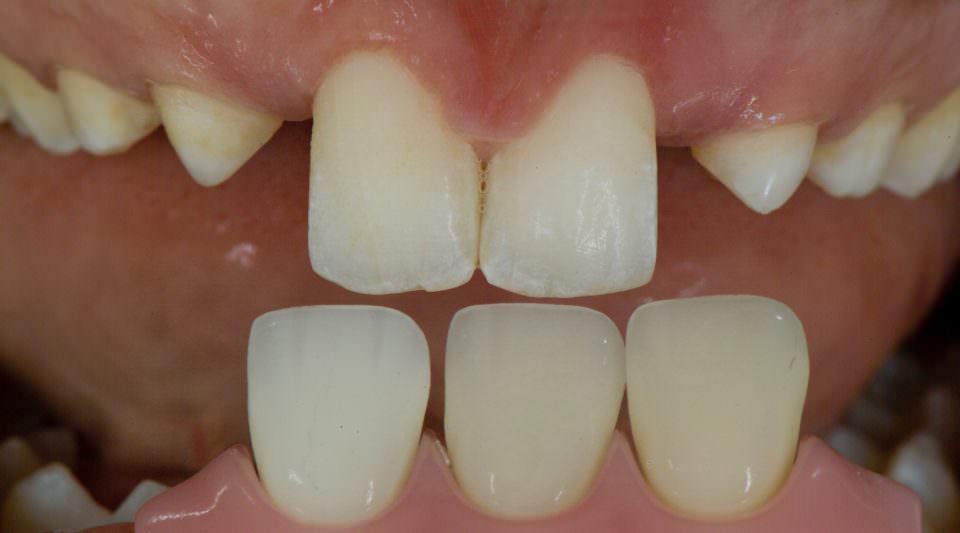
Author(s):
Edelhoff, D., Prandtner, O., Saeidi Pour, R., Wichelhaus, A. , Liebermann, A.
Publication Date:
8. July 2017
DownloadDental Aplasia
J Esthet Restor Dent. 2017 Jul 8;29(4):247-255. doi: 10.1111/jerd.12315. Epub 2017 Jul 6.
Complete jaw reconstructions in young patients who suffer from multiple dental agenesis pose great challenges for both the patient and the treatment team. In most cases, these patients and their family members are under massive psychological strain, which is characterized by hope and uncertainty. An early decision on therapy determines the long-term dental health and physical appearance of the patient for his or her entire life.
Thanks to better restorative materials and adhesive techniques and the increased knowledge of maintaining healthy tooth structures, prosthetic dentistry has increasingly shifted to minimally invasive procedures. The present clinical case documents a minimally/non-invasive maxillary full arch rehabilitation of an agenesis patient with multiple dental aplasia, primary tooth persistence, and deficits in bone growth.The patient was pretreated with a tooth-colored CAD/CAM polycarbonate splint. Adequate esthetics and function were achieved with two adhesive, single-wing zirconia-based adhesive bridges to replace the upper lateral incisiva, lithium disilicate ceramic partial crowns for the posterior areas and two feldspathic veneers for the upper central incisors.
Conclusions:
Non-invasive pretreatment with a removable tooth-colored splint easily and safely achieves the treatment goal, reduces treatment time, increases predictability, and facilitates the transfer of the prototype to the final restorations. New restorative options allow the minimally invasive treatment of such patients.
Learn more about innovative treatment concepts and their application in our Stories and Tutorials!